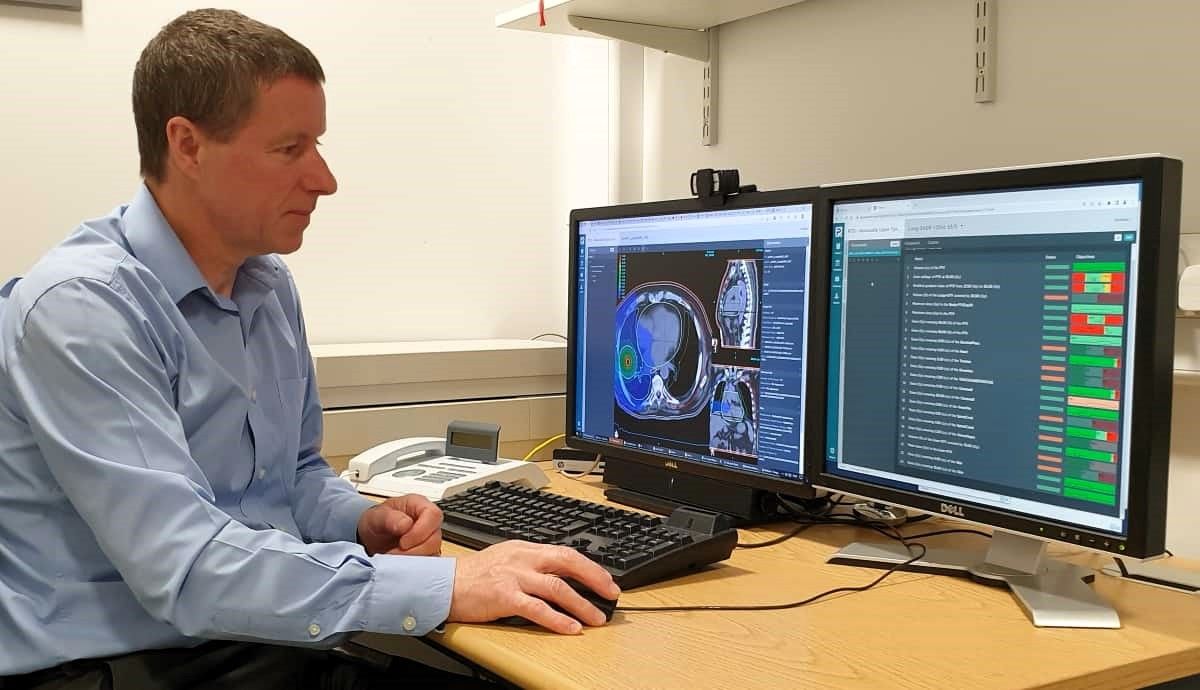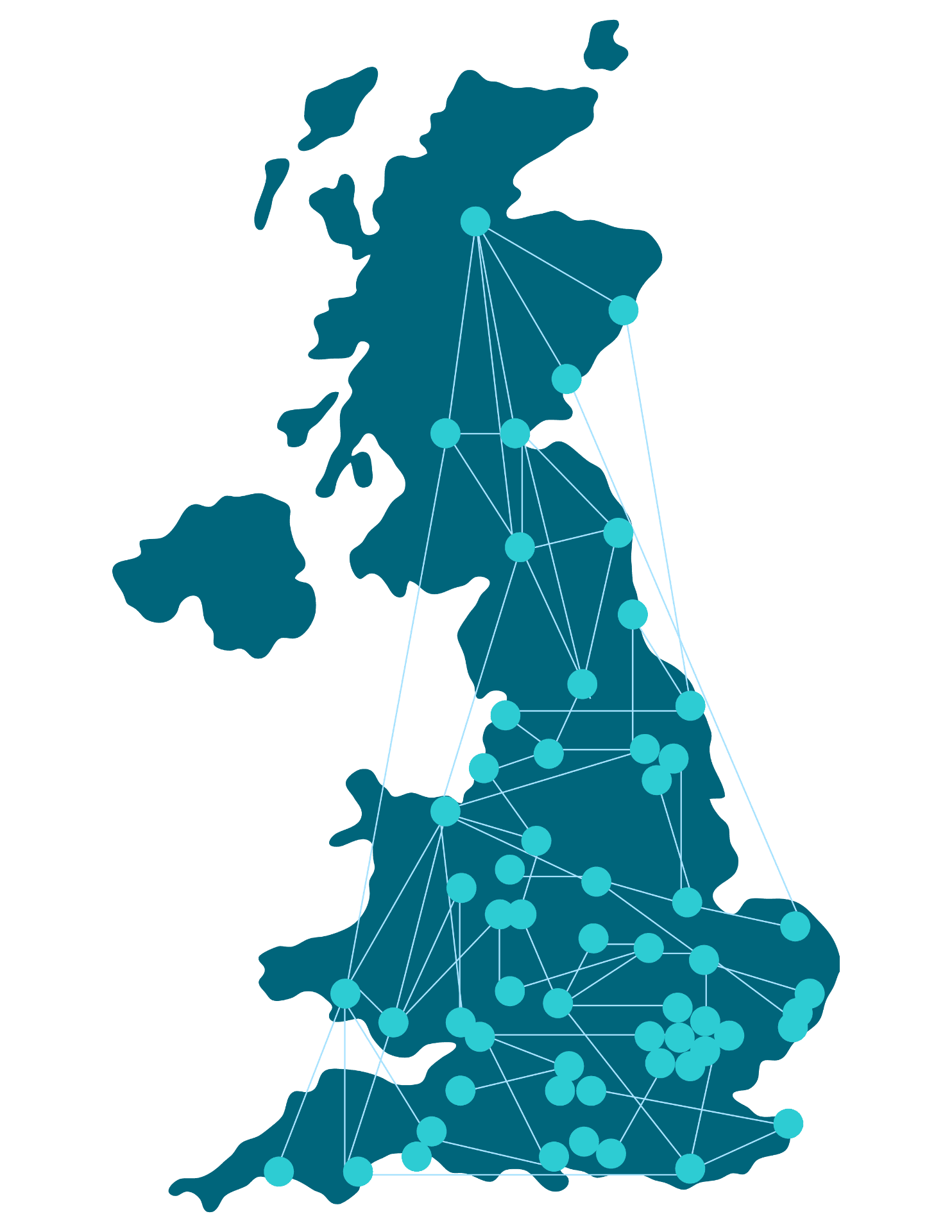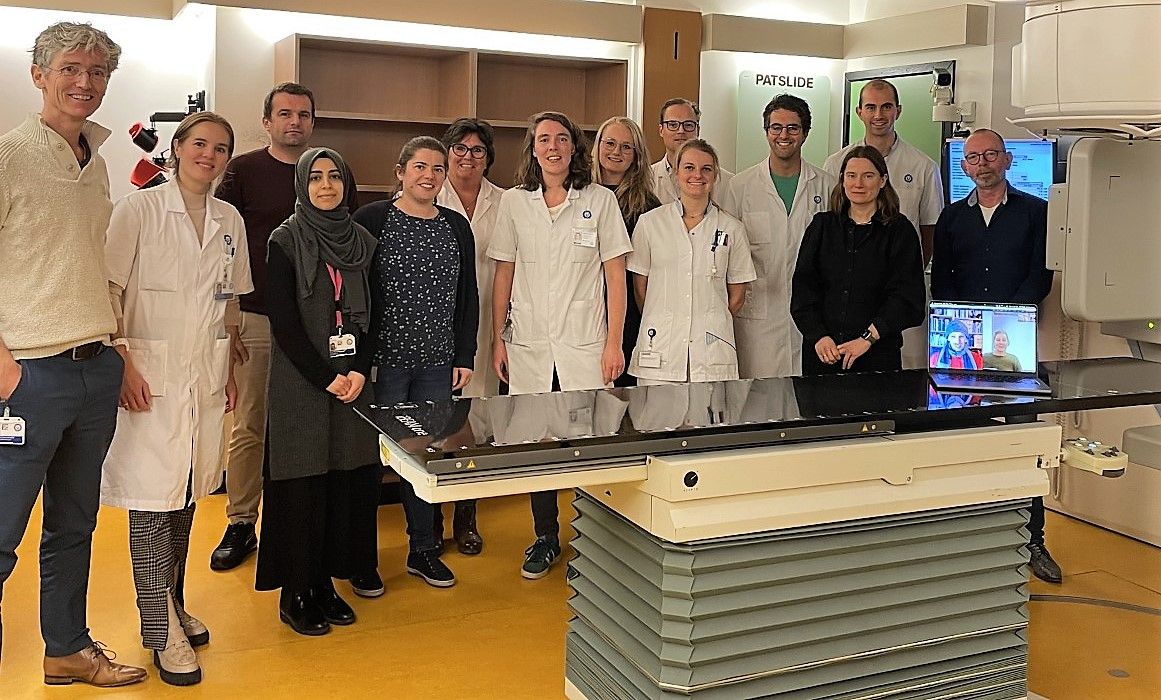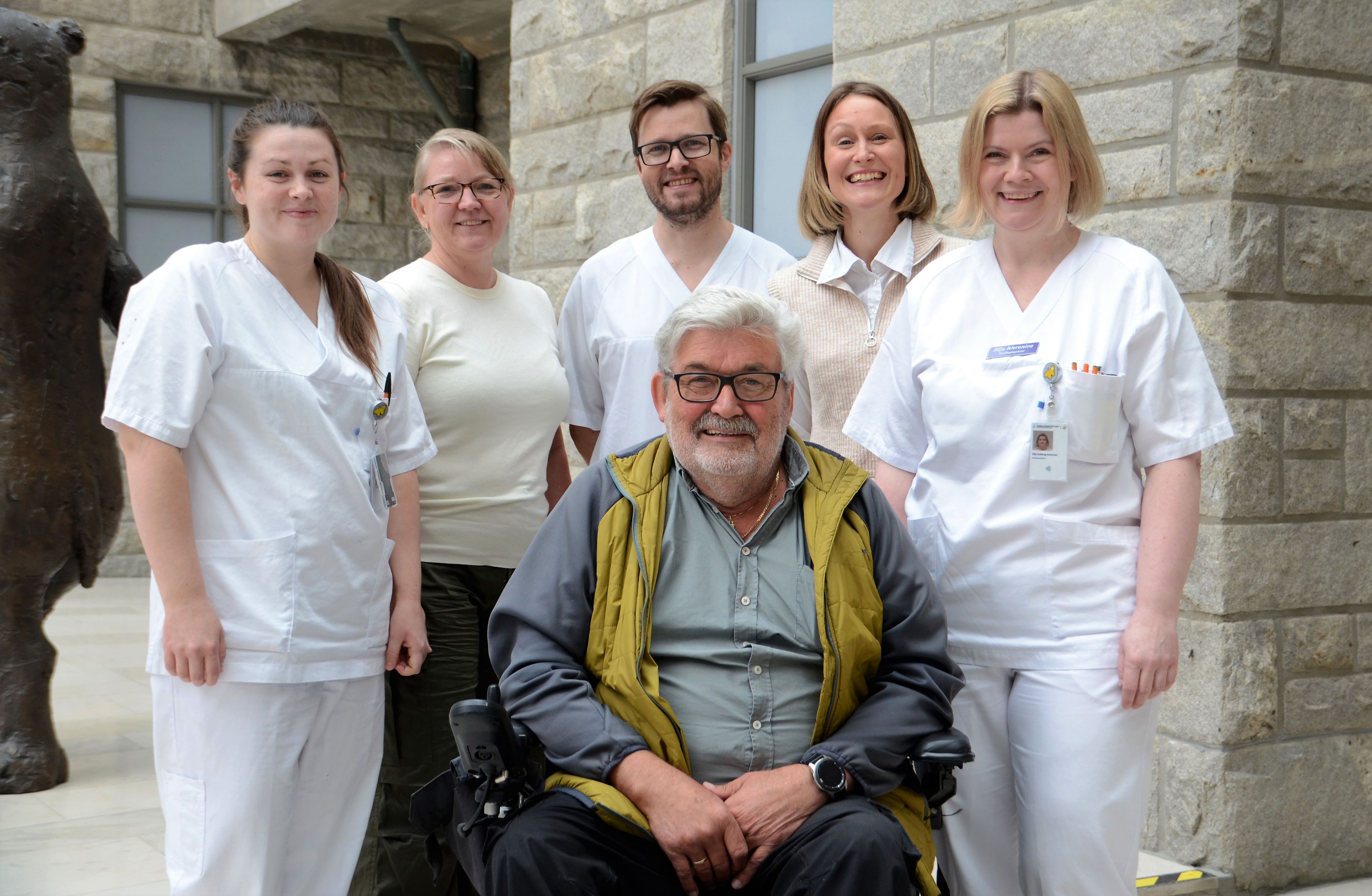Big data transforming cancer radiotherapy

Providers for NHS England employ Elekta ONE Plan Analytics, powered by ProKnow, to unlock insights from enormous repositories of data

In 2022, The National Health Service Supply Chain (NHSSC) ordered multiple licenses for Elekta ONE* Plan Analytics, powered by ProKnow, the company’s cloud-based, big data discovery software. The plan analytics features gave NHS England’s 49 radiation oncology facilities the opportunity to better manage data, evaluate patient treatment strategies and plan review tasks across their network of hospitals and clinics.
At many centers, clinicians have leveraged Plan Analytics to increase quality and consistency and to enhance cancer patient care. For example, there is a variation in the uptake of sophisticated radiation therapy techniques across England; some patients may not experience the benefits of these advances because of where they live. However, Plan Analytics allows remote peer review and sharing of best practices, enabling providers to not only improve access to the best treatment regardless of where a patient resides, but also offers contour training and benchmarking to radiotherapy staff.
FOCUS spoke with six NHS users on how the planning resource has the potential to reimagine patient care at the national, hospital, network and Operational Delivery Network** (ODN) levels, and how Plan Analytics has increased the national standard.
Hospital users impressed by the possibilities
Liam Stubbington, Radiotherapy Physicist at Cambridge University Hospitals NHS Foundation Trust began using Plan Analytics after training on the software in 2021.

“I remember being blown away by Plan Analytics’ potential,” he says. “Radiotherapy is data rich but can be knowledge-poor in areas where it really matters, such as population dose-response curves. It is amazing how few papers provide consistent estimates of LQ model parameters for different tumours and tissue types in humans.”
“The answers are out there; they’re just waiting for us to breathe them in. Plan Analytics provides a suite of tools for data curation and analysis that could help us answer challenging problems like these.”
“The thing is, we are irradiating patients all the time,” Stubbington continues. “The answers are out there; they’re just waiting for us to breathe them in. Plan Analytics provides a suite of tools for data curation and analysis that could help us answer challenging problems like these.”
Stubbington believes the scope is significant, helping clinicians identify which patient cohorts could meaningfully benefit from new treatment regimes.
“Analysis tasks that used to take months, even years, can now realistically be accomplished in an afternoon.”
“Plan Analytics also provides an ideal platform for education, clinical trials and project work. Analysis tasks that used to take months, even years, can now realistically be accomplished in an afternoon,” he says.
In terms of user experience, the Cambridge team observed that the application programming interface (API) is particularly useful.
"A mature API like Plan Analytics’ is very appealing,” he says.
Colleague and radiotherapy physicist Alexandra Constantinou, says that the API has been valuable for their clinical evaluation work. As the team members are currently developing in-house software for treatment planning, they have used the product to carry out a Turing test to determine their clinicians’ subjective assessments of the contour quality compared to clinician gold-standard and those from other software solutions.
“Initially, we had great difficulty trying to set up this evaluation using the other contouring software in the department, until we came across Plan Analytics,” Constantinou says. “Its various features, such as custom metrics – which we could use to record the clinicians’ contour ratings, and its API, which we used to set the evaluation up with ease – made it an attractive platform to house this element of the evaluation. Clinicians can now log into Plan Analytics very easily and remotely.”
She adds that Plan Analytics has facilitated the team’s “mystery shopping” exercise, in which, for example, errors are intentionally introduced to determine if clinicians can detect serious errors the software has made. Because Plan Analytics is not used for treatment planning, they could totally separate this pilot study from the clinical workflow.
“We introduce errors such as left-right transposition of labels to see if clinicians can pick them up as they edit contours,” Constantinou observes. “It is therefore crucial that errors like this could not possibly propagate to clinical systems if clinicians fail to notice them. Plan Analytics’ ability to organize patients into collections was also especially helpful, as we could create a separate collection for each clinician. In this way their edits and ratings would not impact other clinicians’ evaluation inputs.”
Linking up radiotherapy Operational Delivery Networks
Daniel Emmens is a radiotherapy physicist at Kent Oncology Centre and joint Plan Analytics Lead for the Radiotherapy ODN in South East London. This ODN comprises the Maidstone and Tunbridge Wells NHS Trust and the Guy’s and St. Thomas’ NHS Foundation Trust (GSTT).

Kirsty Blythe, who works at GSTT as a senior radiotherapy physicist and Plan Analytics Clinical Lead, joined the ODN team as joint Plan Analytics Lead alongside Daniel in March 2022. Her role includes implementation of Plan Analytics locally, participating in the Plan Analytics leadership group, conducting ODN audits and submitting data to the NHS England national collections. Kent and GSTT have worked together to implement Plan Analytics as a network and used the opportunity to improve collaboration between their Trusts.
“Managing and gaining insight from big data is a very exciting field of healthcare science, and we have such enormous repositories of radiotherapy data across the country that it is great to be involved in bringing it together.”
“Managing and gaining insight from big data is a very exciting field of healthcare science, and we have such enormous repositories of radiotherapy data across the country that it is great to be involved in bringing it together,” Blythe says.
Emmens, can leverage Plan Analytics’ web-based application easily either within the trust or remotely from home.
”I like the ability to create dosimetric scorecards and quickly apply them to a large number of patient plans,” he says. “The histogram features make it easy to assess how well we are achieving a particular metric across the collection, as well as explore any outliers.”
Its Plan Analytics’ capability to enable large scale radiotherapy plan quality audits to improve radiotherapy standards and clinical outcomes that they are particularly interested in. Emmens currently chairs two Plan Analytics groups: one evaluating the Custom Metric feature, and another exploring how to set up a multi-Trust audit for prostate patients following low dose rate brachytherapy. They plan to compare results against minimum RCR standards and assess the scope to improve on these standards. And in general, their network will contribute to the national collections.

“We hope that by participating in the national collections we will be able to identify and prioritize areas in which our ODN Trusts can improve our existing radiotherapy planning techniques,” he says. “With further development of the Custom Metric feature, it may be possible to explore links between dosimetry and patient reported outcome measures [PROMs].”
Their first application of Plan Analytics was a dosimetry audit of left-sided radiotherapy breast plans across the ODN.
“We were able to demonstrate that both Trusts were meeting national standards,” Emmens notes. “The ODN breast audit was benchmarked against heart and lung dose constraints specified by the RCR and the FAST FORWARD trial. They have also developed action points to ensure consistency in how field-based breast PTVs are defined.
“Plan Analytics has the potential to develop or improve existing standards for radiotherapy across a range of treatment sites.”
“It’s been a good experience so far and I am very excited about the potential of Plan Analytics in the future,” he adds. “The software has the potential to develop or improve existing standards for radiotherapy across a range of treatment sites.”
National implementation of Plan Analytics

According to Chris Walker, head of radiotherapy physics at Northern Centre for Cancer Care in Newcastle, applying Plan Analytics to NHS England’s 49 radiation oncology facilities was a challenge but notes there are now 23,000 patients covering most of its radiotherapy providers.
“One of the strengths of Plan Analytics is the ability to share data between employers, while also automatically and seamlessly maintaining compliance with information governance by anonymization,” Walker says. “The radiotherapy community has many years of data but until now hadn’t had a way to unlock that massive information source. Now we can find links that are impossible to see when we only look at our own individual patients.”
Plan Analytics is both a conduit to, and analytical tool for, evidence-based research into real-world radiotherapy data.
Providers can now not only contribute to national collections that track dose metrics associated with lung SABR and breast but can also work together with their network members to satisfy the requirements of the 2019 specification.
“This has put the power to analyze data into the hands of data owners, but with the ability to learn and share across the whole country.”
“This has put the power to analyze data into the hands of data owners, but with the ability to learn and share across the whole country,” Walker continues. “Beyond breast radiotherapy and lung SABR, dose metrics also are in development to allow providers to meaningfully compare treatment plan quality across a range of disease sites from head-and-neck to prostate and including paediatric radiotherapy. This could lead to increased standardization, improving efficiencies, patient safety and accuracy in RT treatments.”
Plan Analytics also is expected to have a big impact on improvement of radiotherapy services both locally and nationally.
“Plan Analytics enables collaborative working within and between NHS England regions.”

John Byrne, deputy head of radiotherapy physics at Northern Centre for Cancer Care at Freeman Hospital, Newcastle upon Tyne and NHSE Plan Analytics national administrator, says: “Part of our business is to measure and improve the quality of our service to ensure that patients get the best and this tool will massively reduce the amount of time it takes us to analyze our data and also learn from other hospitals. Plan Analytics enables collaborative working within and between NHS England regions.”
Learn more about the benefits of Elekta Plan Analytics.
*Elekta ONE powered by ProKnow® has CE-mark and FDA 510(k) clearance. Elekta ONE is comprised of multiple Elekta solutions, some of which may not yet be available in all markets.
**A Radiotherapy ODN consists of NHS Trusts that provide radiotherapy treatment in a defined region within the NHS. Established in 2020, the Radiotherapy Network is designed to modernise and transform the provision of radiotherapy services which, in turn, will allow more service users to benefit from innovative technology, improved treatment outcomes and enhanced patient experience.
LAROX230912





